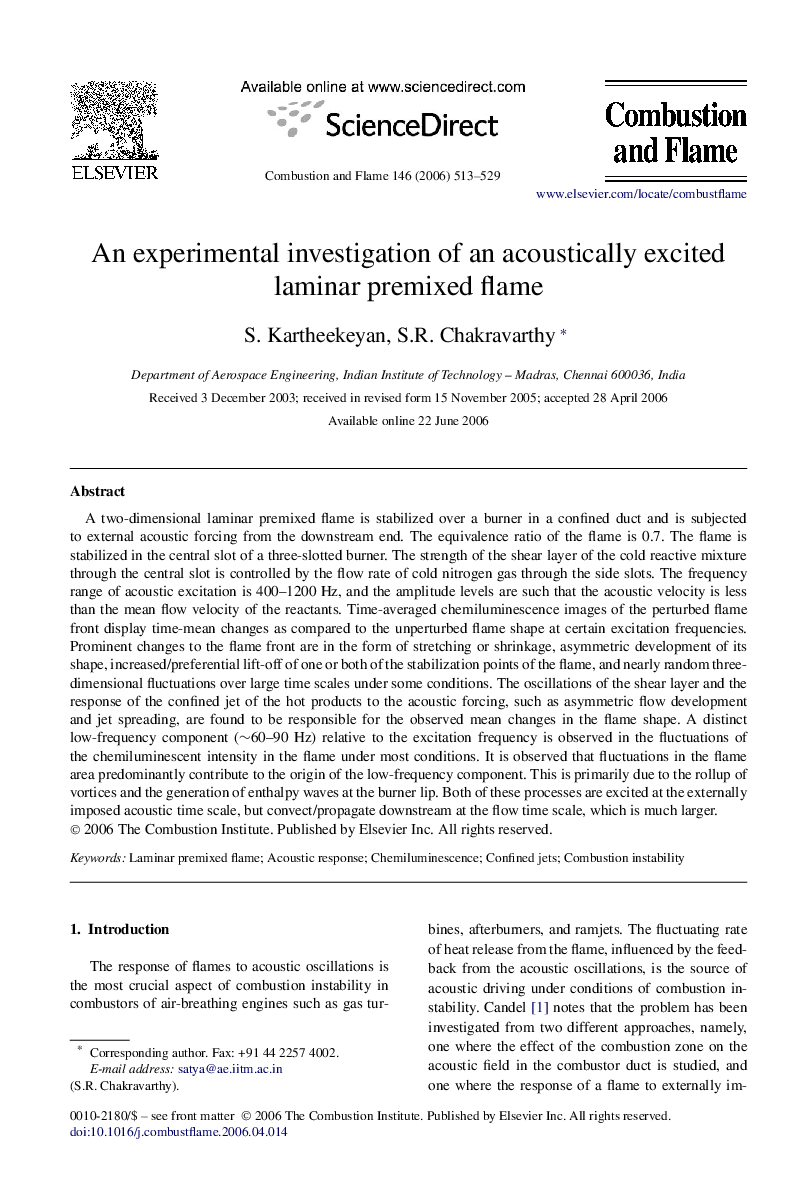| کد مقاله | کد نشریه | سال انتشار | مقاله انگلیسی | نسخه تمام متن |
|---|---|---|---|---|
| 167500 | 457864 | 2006 | 17 صفحه PDF | دانلود رایگان |

A two-dimensional laminar premixed flame is stabilized over a burner in a confined duct and is subjected to external acoustic forcing from the downstream end. The equivalence ratio of the flame is 0.7. The flame is stabilized in the central slot of a three-slotted burner. The strength of the shear layer of the cold reactive mixture through the central slot is controlled by the flow rate of cold nitrogen gas through the side slots. The frequency range of acoustic excitation is 400–1200 Hz, and the amplitude levels are such that the acoustic velocity is less than the mean flow velocity of the reactants. Time-averaged chemiluminescence images of the perturbed flame front display time-mean changes as compared to the unperturbed flame shape at certain excitation frequencies. Prominent changes to the flame front are in the form of stretching or shrinkage, asymmetric development of its shape, increased/preferential lift-off of one or both of the stabilization points of the flame, and nearly random three-dimensional fluctuations over large time scales under some conditions. The oscillations of the shear layer and the response of the confined jet of the hot products to the acoustic forcing, such as asymmetric flow development and jet spreading, are found to be responsible for the observed mean changes in the flame shape. A distinct low-frequency component (∼60–90 Hz) relative to the excitation frequency is observed in the fluctuations of the chemiluminescent intensity in the flame under most conditions. It is observed that fluctuations in the flame area predominantly contribute to the origin of the low-frequency component. This is primarily due to the rollup of vortices and the generation of enthalpy waves at the burner lip. Both of these processes are excited at the externally imposed acoustic time scale, but convect/propagate downstream at the flow time scale, which is much larger.
Journal: Combustion and Flame - Volume 146, Issue 3, August 2006, Pages 513–529